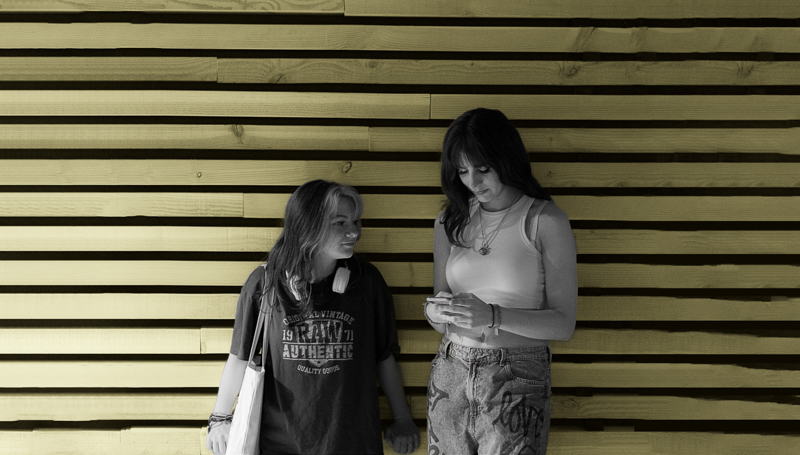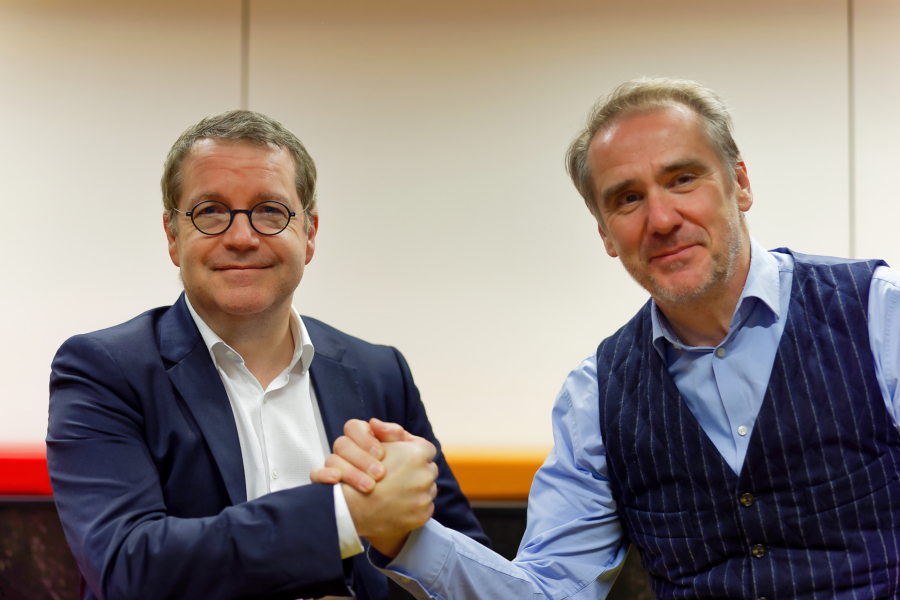26 March 2024
Gen Z unveiled: Beyond the one-size-fits-all approach

Introduction.
Generation Z teenagers are often seen as one group with similarities, but the reality is different. Two 16-year-old friends from 4 Havo, with similar backgrounds, may have completely different interests and motivations. For marketing and communications professionals, this means that a “one-size-fits-all all” approach is not effective. A brand message may be relevant to one, but completely irrelevant to another. So how do you reach a large group of young people? Before we explore this question further, let’s zoom in on what characterizes and sets this Generation Z in motion. Despite individual differences, however, some similarities connect and distinguish this generation from other generations and young children.
Generation-Self
In the Netherlands, there is an average of 3 million young people from Generation Z, between the ages of 12 and 27*. This generation is known as tech-savvy, always connected, socially engaged, and entrepreneurial. They grew up with freedom and are used to making their own choices. Gen Z’ers are confronted daily with world news, changes, and injustices. They see problems such as the climate crisis, discrimination or war and understand that they themselves must take action for their future. They are global citizens working together for a better future.
Information overload.
Teens are exposed to more than 3,000 communication stimuli** every day. Mainly through social media, unfiltered and without restraints. They also produce and share a lot of content. Because of this constant flow of information, teenagers process information at lightning speed. They often “scan” information unconsciously, with an attention span of 8 seconds at most. They judge in a split second whether the message is relevant. Intrusive advertisements, uninteresting topics, a video that is too long or an unauthentic story are immediately ‘swiped’ away. It is becoming increasingly challenging as a brand to stand out and touch young people’s hearts and minds. Is it still feasible? Absolutely! Here are three opportunities for effective communication to connect more with the youth.

Opportunity 1 Get to know your target audience even better.
A youth campaign or brand message becomes effective only when it connects to the experience of the intended target audience. Think carefully about who you want to reach, what stage of life these Gen Z teenagers are in and what concerns them. What role models or Gen Z motivations are relevant to them and what can you capitalize on? But also consider who are the key influencers you can engage, such as parents or a school. Each stage of a young person’s life has specific social-emotional needs and their own view of the world. Early adolescents aged 10-14 want to blend in primarily with a group of friends, while 16-22-year-olds are busy shaping and expressing their own identity and skills. Therefore, a campaign that encourages young people to express their talents, for example, works better with an older group of young people. Qualitative research and co-creation with young people and their influencers are very valuable for a deeper understanding of the target group and a better alignment of the campaign with their perceptions.

Opportunity 2 Involve teenagers in content.
Increasingly, teenagers are becoming involved in content with organizations as sparring partners, co-creators or even full-fledged colleagues. For example, in creating educational programs, hosting an event or managing social media. The Stedelijk Museum has been working with a group of young people called “Blikopeners” since 2008. This group 15-19 years old, work as peer educators at the museum for a year and targets peers. It is also valuable for a creative communications agency to involve young people in the strategic development of a campaign or rebranding. By working with a group of young people as stakeholders, you can develop and test valuable insights and ideas. An added benefit is that they can reach out to other teens as ambassadors. Don’t talk about young people, but engage them and make them co-owners of the project. This is how the best ideas are created, if they are properly guided, because you cannot expect a group of young people to start working on their own right away. And don’t forget to give something back to the youth group.

Chance 3 Surprise and choose the right format.
With the abundance of information and online channels, getting the attention of teenagers is increasingly challenging. Before the message grounds, you need to stand out. In your creative strategy and resources, it is important to choose emotional imagery that touches, excites or confronts. Consider a form that surprises and fits their stage of life and select the right medium. An example of a successful youth campaign from 2020 is the collaboration between Interpolis and Dutch artist Snelle. In the music track and music video “Smoorverliefd,” young people are warned about the dangers of using smartphones while cycling in a non-insulting way. Experiences of young people formed the basis of the song and the track now has a reach of 63 million streams on Spotify. To find the best campaign format, collaborate with creative talent familiar with Gen Z. This increases the chances of creating authentic imagery. Want to get young people to take action? Then show other young people from the same stage of life in communications, so they can better identify and feel it is relevant to them as well.
The one young person does not exist.
An effective campaign targeting different life stages is not very realistic. Chances are that only a small group will feel addressed. For effective communication, it is necessary to first understand the motivations of the specific group you want to reach. At Total Design and TD Zuiderlicht, we believe in the value of qualitative research and co-creation when developing campaigns and rebranding projects. We immerse ourselves in the subject matter and stay in conversation with the target audience and stakeholders throughout the process. Insights help us arrive at the best strategy and creative form. Want to know more about effective youth communication or target group research? Then contact Derk Zijlker of TD Zuiderlicht in Maastricht: derk@tdzuiderlicht.com
*Gen Z born between 1997-2012, https://www.beresfordresearch.com/age-range-by-generation/
** 3.000 communication messages per day: https://www.devaca.nl/werk/aantal-reclames-per-jaar/
https://www.gezondleven.be/files/voeding/informatiedossier-reclame.pdf
Photo Blikopeners copyright Stedelijk Museum



